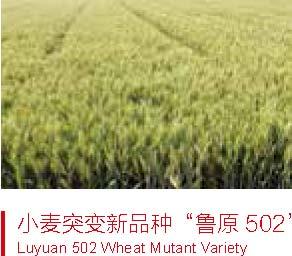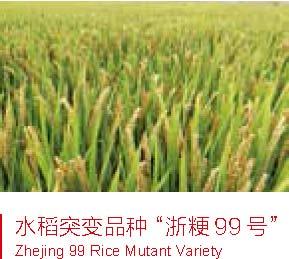Mutation Breeding
Interest in induced mutation breeding has spiked in China. The technology has been increasingly applied for crop improvement. Research in this field has been a joint effort spanning many sectors, including agriculture, research institutions and universities. More than 40 entities are involved. Cooperation and coordination have yielded remarkable results, placing China at the forefront of research on the application of this technology. As a member of the Steering Committee of the Plant Mutation Breeding Network for Asia and the Pacific, China has long been taking a leading role in implementing cooperative projects under the framework of the Regional Co-operative Agreement for Research, Development and Training Related to Nuclear Science and Technology.
A total of 1,050 mutant crop varieties have been developed in China by using radiation mutation breeding, accounting for one fourth of all mutants currently listed in the IAEA/FAO's database of mutant varieties produced worldwide. Annually, about 8-10% of the main crop varieties used in agricultural production come from a radiation-induced mutation process. An attempt was made to leverage space technologies in seed breeding, through 17 space trips and the launch on September 9, 2006 of China's seed-breeding satellite, Shijian-8, leading to the development of new types of high-quality germplasm, including dozens of new crop (rice, wheat, tomato, green pepper and sesame) varieties.


农作物诱变育种
中国农作物诱变育种技术研究发展迅速,在研究和发展诱变技术的同时,将该技术与农作物改良密切结合。通过组织全国农、科、教行业大联合、大协作,形成了一支包括40多个单位的国家核辐射诱变技术育种研发队伍,促进了核辐射诱变技术育种的持续发展,使中国的核辐射诱变技术及其育种应用研究一直走在世界前列,为国际原子能机构亚太地区植物诱变育种项目的牵头国、亚太区域植物突变研究协作网依托国。
中国利用核技术诱变已育成了1050个突变品种,占国际原子能机构 /粮农组织全球突变品种数据库所列突变品种的1/4。每年在生产上应用的主要农作物品种数量、播种面积里,8%~10%来自辐射诱变育种。通过17次太空搭载和2006年9月9日实践八号卫星选育出一批优异新种质、新材料,包括水稻、小麦、番茄、青椒和芝麻等几十个农作物新品种。




